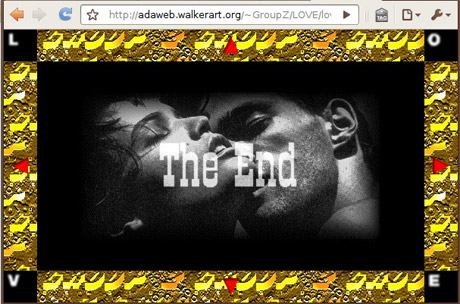Early Experiments Online

Early Experiments Online: Olia Lialina, one of the net art pioneer writes about early experiments
In 1995, along with many people all around the globe, I was making my first Web page, for an experimental film club in Moscow. I still remember confusion about the new medium. Was it here to replace everything that was before, or was it just a temporary phenomenon to give way to something else next Christmas? Whatever the future would hold, one thing was absolutely clear: in a couple of more weeks, maximum a month, when the next browser version was released and the connection got a bit faster, with some more memory in the computer, it would be possible to watch films online. I even made a “cinema” button for the menu, ready to activate it as soon as the technology was ready.
Fortunately, it took a while. If it had been possible to distribute video online from day one, there would be no Web as we know it today. Instead, during the long wait for shareable online video, artists developed a distinctive language that we still value today, applying clever montages, modular visuals constructed from reusable, repeatable elements, and minimal activity.
The work of early Web artists was closer to the ideals of experimental film or theater performance than those of video. Love, made in 1995 by the fictional Group Z (now known as Michael Samyn, one-half of the Tale of Talesgame-artist duo), was one of the first experiments in telling a hypertext story in a cinematic way. Through the excessive use of HTML frames and background images, the Web page became a film-like screen instead of a PC monitor. Even though it was made for the Netscape 2 browser it still works perfectly!
Mouchette.org was started in 1996. It is loosely based on the 1967 Robert Bresson movie Mouchette and is also a very cinematographic Web site offering a rich audio-visual experience. It is astonishing that through extremely reduced means and clumsy design, the anonymous author manages to recreate an atmosphere of misery and cruelty, known from Bresson’s film, but for a new medium and a new audience.
